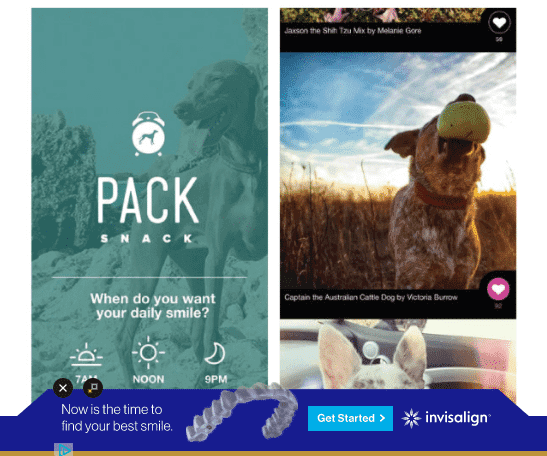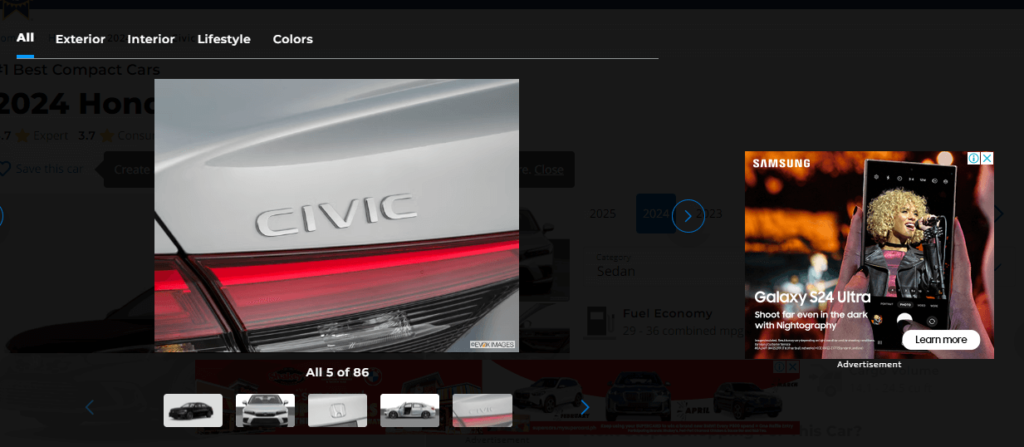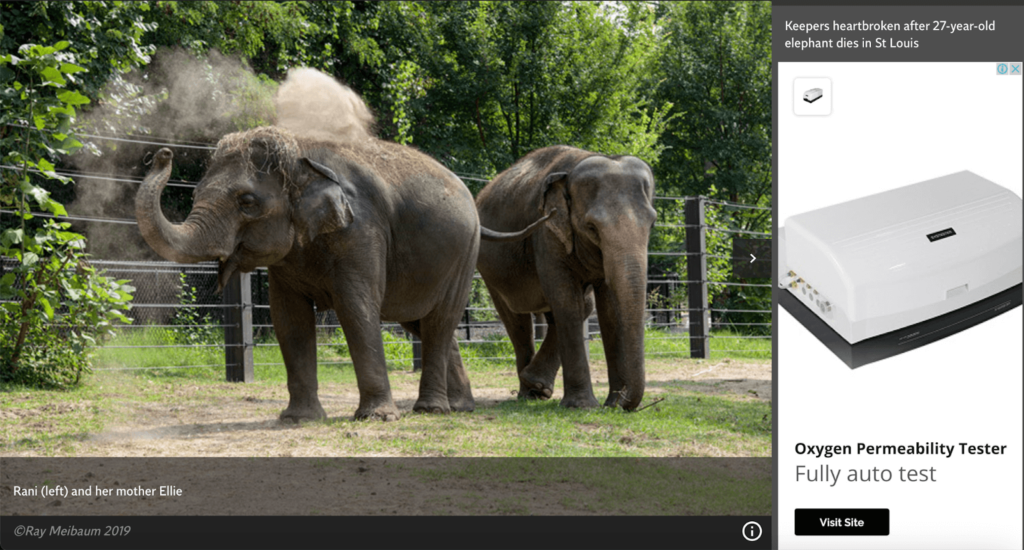In-Image Ads: Everything Publishers Should Know
Incorporating visuals in adverts continues to be the best way to capture the attention of your target audience. Almost half–or 47%-of marketers incorporate images in their content, including ads. In 2023, more than 75% of the marketing content of 21.9% of marketers contained visuals.
You may wonder how to earn extra revenue from advertisers without adding intrusive, annoying ads to your posts.
You have come to the right place. In this article, you’ll learn about in-image advertising, how it works, and why it’s great for your site. You’ll also discover four in-image advertising types. Let’s get started.
What Is In-Image Advertising?
In-image advertising is a native advertising practice that places an ad at the base of an editorial webpage image or a static graphic as an overlay. In other words, this advertising method utilizes places where the user’s attention is the highest and places ad units within relevant images of the content. When a user hovers over the ad or clicks on it, they can access more details about the brand.
The image ad is placed on the website through platforms such as Inuvo, GumGum, and others. Brands can place their in-image ads on your relevant images as long as your blog or website is registered on a network.
Therefore, work with an ad-placing platform with a long list of high-quality partners. It’s a good sign that they are a reliable source of relevant in-image ads for digital content creators and website owners.
Integrating In-Image Advertising into Your Digital Marketing Strategy
In today’s digital age, where online visibility is paramount, digital marketing strategies are pivotal in reaching and engaging target audiences. In-image advertising emerges as a compelling tool within this landscape.
By seamlessly integrating branded content into visually captivating images, in-image ads harness the power of visual storytelling to captivate audiences and drive engagement. This form of native advertising aligns with broader digital marketing objectives, enhancing brand visibility, increasing ad viewability, and ultimately driving conversions.
Leveraging advanced targeting capabilities and AI-powered technologies, in-image advertising ensures that brands connect with the right audiences in meaningful ways, thereby maximizing the impact of their digital marketing efforts.
As digital marketing continues to evolve, embracing innovative approaches like in-image advertising can give publishers a competitive edge in monetizing their online content while delivering value to advertisers.
Why Should Publishers Embrace In-Image Advertising?
In-image ads capitalize on the eye-catching nature of editorial images. Since they easily blend with these images and even make them more visually appealing, in a way, they enhance your reader’s user experience.
These ads are also less intrusive forms of advertising than display ads. They look and feel more natural. Because of this, they prevent banner blindness, which occurs when viewers deliberately dismiss information displayed on banners. In-image ads, overall, tend to have a higher viewability rate.
The ads are also highly targeted. The ads you receive from the platform you’ve registered on are always relevant to your audience and content. Because these ads are mainly visual content that users also like to consume, they ultimately yield a high ROI for advertisers, which is good for you, too.
How Does In-Image Advertising Work?
Once you’ve registered your website or blog on your preferred image advertising platform, you need to opt into the in-image advertising feature.
The platform then uses the keyword list provided by the advertiser to determine whether their ads will be a good fit for your blog or website. These platforms also allow advertisers to choose the geolocation and demography to display their ads. With these methods combined, advanced targeting and better advertising results are possible.
These advertising networks also use AI-powered semantic, context, and image recognition technology. The technology identifies the image, article, and web page to which an ad would be most relevant and displays it there.
The ad is then superimposed at the bottom of a prominent image on your blog or web page. The ads can also come in the form of videos and rich media that appear whenever a site visitor moves the mouse cursor over your site image or clicks on it.
The reader can click on the ad to get more information about the brand being advertised. This information is typically contained in a landing page created with tools such as Unbounce, Leadpages, or Instapage.
If the reader doesn’t want to engage with the ad, they can just opt to close it.
4 In-Image Advertising Types
There are four main in-image ad types. They differ in the ways they look and the specific purposes they serve:
1. Contextual Image Ads
Contextual image ads are served to users based on the specific web page they are viewing at that moment. These image ads are different from behavioral ads since they don’t rely on data such as location or demographics to choose which ads to show the user.
In other words, contextual image ads do not use cookies to track the user’s activity to decide which ads to display to them. Instead, these ads are shown to all users who visit a particular web page. Here’s an example.

Source: Seedtag
Notice that the ad above from Dell, which sells laptops, was incorporated into the image of a Techradar blog post also on laptops.
2. Corporate Image Ads
Corporate image ads are sent out to promote the brand as a whole and not to advertise a particular product or service. They are intended to paint a company in a positive light in the eyes of the public.
For example, this Invisalign corporate ad was shown in a Modern Dog Magazine article. It only highlights the brand’s name, logo, and a brief slogan to boost brand awareness.

Source: Instapage
These ads usually feature a brand’s logo and a simple slogan that indicates why it is a good choice for the user.
3. Remarketing
Remarketing ads are sent to users who visited a website but did not take the desired action before leaving. These ads are placed strategically on other websites that they follow to remind them of the product they viewed and encourage them to take the desired action. Here’s an example.

Source: KBB
Whilst searching for phones on the Samsung site, we subsequently went to the Kelley Blue Book site, an automotive industry website. We clicked on a Honda Civic image on one of the site’s blog posts. When a Honda Civic car gallery popped up, an in-image Samsung ad reminded us of one of their products.
These ads use cookies to track a user’s activity online and know how to target them effectively. Therefore, remarketing ads don’t need to be contextually relevant. For the best results, some brands use these types of ads in conjunction with email marketing as well. They send subscribers emails of the product featured in the remarketing in-image ad to remind them it exists. This is done after confirming subscribers’ addresses with an email finder tools that has verification features. This step is to ensure the emails reach the right people.
However, as remarketing relies on third-party cookies, moving forward, this method will need to adapt to new technologies and strategies that respect user privacy while still allowing for effective advertising.
Several privacy-friendly alternatives to third-party cookies are being developed and adopted, including Google’s Privacy Sandbox (Topics API), universal identifiers (Unified ID 2.0 and LiveRamp’s IdentityLink), and contextual advertising.
4. Product Advertising
Product advertising is a form of in-image ad that allows brands to market specific products to their target audience. They are created to convince consumers to purchase the marketed product.
For example, Systester promotes its oxygen tester machine to readers of a The Independent website’s article. Once you click on the blog, the ad is displayed within a few minutes.

Source: Independent
To bring a product’s existence to the audience’s attention, the in-image ad itself highlights product features and its aesthetic. That way, those who did not view the item as an option can consider trying it out.
In Closing
To wrap up, in in-image advertising, an ad is placed at the base of a webpage image or a static graphic. Because of how they’re designed, these ads are a less intrusive form of advertising. That helps increase ad viewability and effectiveness.
Whether it’s contextual, corporate, remarketing, or product image advertising, with in-image ads, you can earn extra revenue from your website or blog. The best part? These ads won’t scare away your readers who value the user experience. In fact, they might even appreciate the ads because of the natural way they blend into your content.
Why not try in-image ads today?


